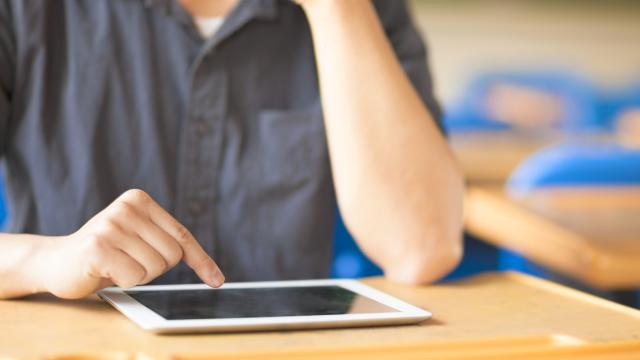Yesterday, the Los Angeles Times reported that its sprawling hometown’s school system, the second largest in the US, would be withdrawing from last year’s ambitious promise to supply all 640,000 students with an iPad. Good. The Los Angeles United School District just dodged a $US1 billion, tablet-shaped bullet.
When the iPad premiered four years ago, it brought with it the attractive idea that all our heavy, egregiously expensive textbooks would soon be digitised in a 680g tablet. Quickly, schools began adopting the platform, even in its nascent, first-generation phase (which is almost always a terrible idea). In 2012, Apple pushed even more aggressively into classrooms with a suite of Apple the company had sold seven million iPads to schools and universities.
But tablets aren’t the PC slayers we thought they’d be, and laptops — specifically Google Chromebooks — are offering a cheap, cloud-collaborative solution for students. Even more importantly, they come with a keyboard. Feel like typing a 10-page research paper on an iPad? Yeah, me neither. Tablets are just not the best be-all-end-all solution to foist upon students, especially in such massive districts like LA, where every school faces its own unique set of challenges.
LA’s program has been pockmarked with problems from the beginning. 2100 iPads were recalled last September when students hacked the device, and earlier this year the district said it was going to switch up its digital offering by allowing students to choose from six different Windows and Chromebook options.
A recent article by the Atlantic details the digital battlefield playing out in schools across the US. The piece focuses primarily on the Hillsborough district in New Jersey and its transition from Apple to Google. The benefits are both practical and psychological. Students are able to collaborate more easily in the cloud using Google’s app suite, and where iPads are seen as devices made for watching movies and playing games (which are particularly un-scholarly activities), students see a laptop as a place to “get to work,” according to the article.
It’s not that Chromebooks are unimpeachable. While Google flaunts its education app’s 30 million subscribers, its platform isn’t without its flaws. NPR mentions teachers’ concerns about assuming all students have reliable Wi-Fi access (necessary for effective Chromebooking), growing privacy issues considering Google’s less-than-sterling reputation, and staff training costs to acquaint teachers with Google’s constantly evolving education tools. Google’s addressing at least one of those issues by making its services more kid-friendly and offering more effective opt-in requirements per Tom Wang/Shutterstock
